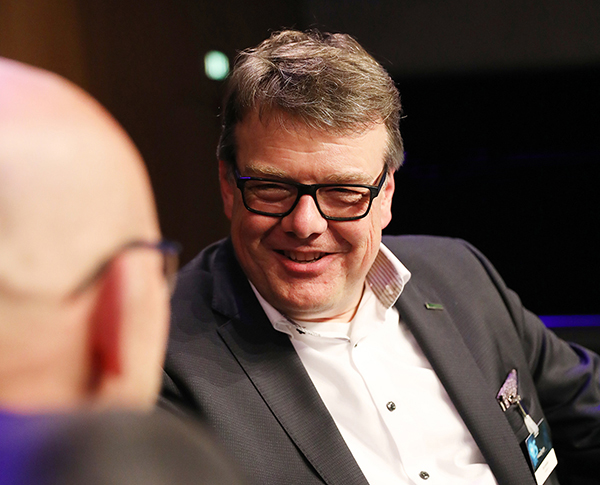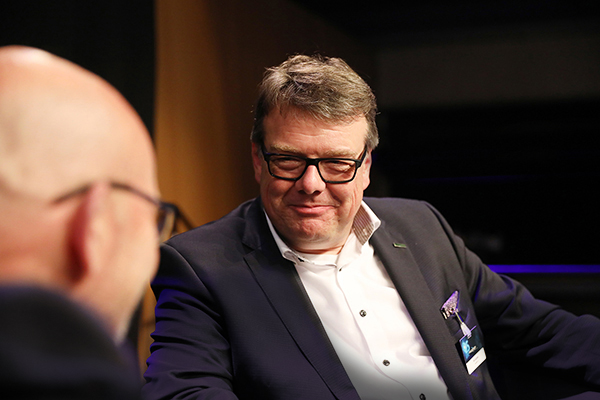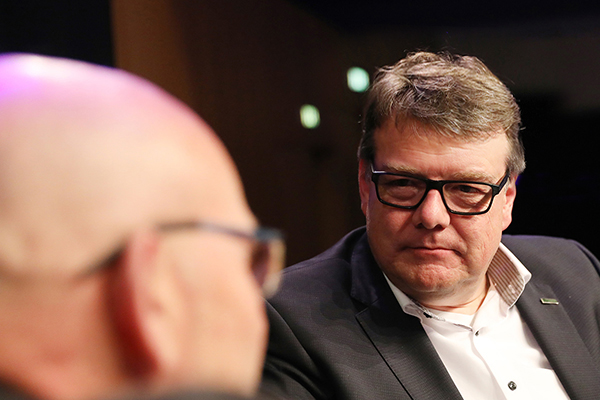
|
|
Dirk Spindler, Head of R&D Processes, Methods and Tools at Schaeffler, is a relative newcomer to the field of PLM. Up until mid-2016, he was head of development for the company's Industrial division, which manufactures system components for engines, transmissions and chassis as well as rolling and plain bearings for industrial applications. In this interview, he explains how he intends to digitalize Schaeffler's development process and tool chain. 
Question: The title of your presentation at PROSTEP's anniversary event was "The Future of Industry". Does the automotive industry actually have a future? Spindler: Yes, provided that it succeeds in making the transition to digitalization and e-mobility, which is something it has clearly identified. New mobility concepts must be developed under the leadership of the carmakers; otherwise there is a danger that the car will become a standard product. Question: PLM was also written off as a commodity for a long time, but now it seems to be "in" again. What is your take on this? Spindler: Yes, that is absolutely the case. To put it rather provocatively, PLM in the form we want to do it today has never existed before. It has always been very much focused on mechanical aspects and what I would call PDM. Digitalization and topics such as systems engineering have given PLM a considerable boost in the past two or three years. Nowadays, products have to be described very differently and aspects such as service and after sales have to be taken into account. We also need PLM more than ever for the digital twin and model-based systems engineering. But the IT solution providers need to rethink how the term PLM fits in. Question: How are you getting on with building the model-based product creation process (PCP), for which Schaeffler laid the foundations in the MecPro2 project? Spindler: We turned MecPro2 into a separate project called MecPro4You with the aim of making further progress in applying the findings. But we are still very much in the initial stages, among other things because the necessary standardized data exchange between different systems is not currently possible. We are currently using models within the system context to map architectures. Question: But you are already thinking about the autonomous product engineering process (PEP). What does this involve? Spindler: The next step after model-based systems engineering will be a more automated PCP. Automated in the sense that we take the evaluation of, for example, customer inquiries and the resulting solutions that we develop and use artificial intelligence to provide new solutions for our customers largely automatically, and ultimately autonomously. You could also call this a smart configurator. However, the models I've already mentioned are a prerequisite. Question: In such a diversified organization as Schaeffler, is it even possible to have a uniform PCP given that you have such different customers? Spindler: Yes, if you describe the PCP as a collection of different process modules that are combined within certain constraints to form a custom process for a project. It is thus not a uniform process in the sense of one that is always identical but rather uniform with regard to the process modules, currently around 200, which include appropriate methods and suitable IT solutions. We have also preconfigured various product creation processes depending on the business model. Question: How agile are you within the processes today? Do you, like the BMW Group, want to become one hundred percent agile? Spindler: We are currently bi-modal and agile and tend towards a hybrid approach to product development. We are now largely agile in software development. But even with agile development, you ultimately need fixed gates defined in the project, at which a given deliverable must be available. That's why we stick to our overall project plan with milestones or quality gates and fixed targets, but work on an agile basis in between. As far as I see it, this hybrid approach is (still) the reality in most companies today. 
Question: Are you still digitalizing your business processes or are you already on the way to digital transformation? Spindler: (laughing) I guess we're still digitalizing. But I am always a little wary of such buzzwords because you should use formulations that the team understands and with which they can associate concrete content. Cultural change also means understanding each other's language. Digital transformation is a catchphrase that quickly morphs into a buzzword. At some point, nobody can really explain what it actually is and where the transformation is going to lead. Question: To the development of new, digital business models, for example. What progress is Schaeffler making there? Spindler: We already have new business models in our Industrial division. For example, we are talking about monitoring gear trains in wind turbines, i.e. the whole issue of predictive maintenance or residual lifetime prediction and maintenance planning. In the automotive sector, we are probably still too far from the OEM or end customer. But the bio hybrid, which we presented as a Schaeffler product innovation at CES in Las Vegas and will industrialize in the next few years, gives some indication of where the journey might take us. Question: In the Industrial division, you undoubtedly use an IoT platform for collecting and evaluating sensor data. Have you already established an ecosystem as well? Spindler: Yes, in fact, we have. It's a concept that we call the Smart Ecosystem. It primarily involves collecting and evaluating data from the use of our products in the field in order to generate added value for our customers. For example, we have a rolling bearing with integrated sensor technology that measures data relevant to calculating the service life. This data is then transferred to the platform of a gear train manufacturer, for example, where it is processed further. Question: What does the platform concept for your product development look like? Haven't you turned the concept on its head? Spindler: That's right. I'm often asked that question. At Schaeffler, the "platform" is at the top. The Engineering Cockpit serves as an overarching PLM backbone, which we use to allow access to the information in the various authoring systems and orchestrate interaction between the systems, e.g. in change and configuration management. Question: Can developers directly access information that is stored in the authoring systems of other cockpits from their own Engineering Cockpit, for example? Spindler: No, the current version of the Engineering Cockpit only accesses the information in its "own" authoring systems and makes it available in a neutral format. In a later version, it will be possible to implement access to other IT systems using appropriate interfaces or via other cockpits. Question: Is the Engineering Cockpit already being used productively? Spindler: It's being developed on an agile basis, so some functions are already live. In the course of this year, we will gradually be adding additional functionality such as engineering change management. 
Question: Will certain functions in the existing systems be switched off at the same time? Spindler: No, we won’t be mapping any functions in the Engineering Cockpit that have already been implemented in other systems. Each user remains in the domain they are familiar with. Our mechanical developers, for example, are familiar with Windchill and Creo, and I don't see much use in replacing these with a different tool. Above all, the Engineering Cockpit is a system-level tool on which the configurations are documented to a given maturity level and from which the so-called mechatronic BOM and implementation jobs for the various disciplines are generated. Question: Is your PLM platform still installed on premises or is it already running in the cloud? Spindler: At the moment everything is still installed on premises because we are still developing the solution and only have a few users on the system. But I assume that we will gradually move all our applications to the cloud, among other things because the IT vendors are moving in this direction. But it will probably not be a single cloud – we are pursuing a multi-cloud strategy that uses the most appropriate strategy. I'm not too concerned either way. Question: You're not worried about cloud-to-cloud connectivity? Spindler: No, because we already have that in many areas of application today. I believe that we have solved many problems over recent years through the use of interfaces and standards. Of course, PROSTEP has played a major role in this. Undoubtedly, we will need even more standards and strategies such as the Code for PLM Openness, but the technical problems can be solved. Mr. Spindler, thank you very much for talking to us. (This interview was conducted by Michael Wendenburg)
About Dirk Spindler Dirk Spindler (born in 1964) has been working for the Schaeffler Group in various positions in product development at home and abroad since 1990. He has headed up the R&D Processes, Methods and Tools at Schaeffler AG since 2017. Spindler studied Production Engineering and Precision Engineering at the TU Kaiserslautern. He is married with two sons. |
|
| © PROSTEP AG | ALL RIGHTS RESERVED | IMPRESSUM | DATENSCHUTZERKLÄRUNG | HIER KÖNNEN SIE DEN NEWSLETTER ABBESTELLEN. |

